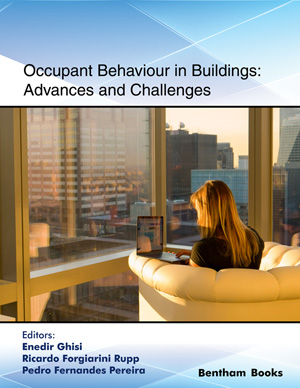Abstract
Cultural heritage plays an important role in society, not only in cultural terms but also due to its touristic interest. From a purely economic point-of-view, the increasing number of visitors can be a way to achieve financial sustainability. However, it is necessary to ensure that conservation and comfort conditions are not affected, since the human body releases heat, moisture, CO2 and odours.
A suitable relation between ventilation and occupancy may be used to minimize some of these effects, but it is not easy to reach because there is no unanimity in the literature on comfort and health issues. Besides, the information about ventilation and occupancy that is used in cultural heritage buildings is scarce, even after the recent publication of the EN 15759-2. In this chapter, a sensitivity simulation study using a hygrothermal simulation model of a generic museum is developed. This chapter aims to analyse the impact of the binomial ventilation vs. occupancy, simulating various combinations of ventilation and air recirculation on the indoor air quality, conservation and energy consumption in museums. Since the visits to major national museums take usually long periods, the concept of adaptation was analysed to reduce the airflow of fresh air per visitor. The study was carried out using the software WUFI® Plus for the hygrothermal and energy simulation.Keywords: Air recirculation, Cultural heritage, Conservation, Computational simulation, Indoor air quality, Museums, Occupancy, Preventive conservation, Ventilation.


















